Aerospace Industry
Air Compressor for Aerospace
High-pressure air compressor for Aerospace
Not PISTON
No more high noise and vibration
|
|
SCREW TYPE
Patented Two-stage single-screw compression
|
|
Not BOOSTER
No more high maintenance costs
|
| CONTACT US |
| We have more than 30 years’ experience. |
Typical Applications for Aerospace Air Compressor
The rotary screw air compressors play a major part in the manufacturing and in-flight control functions in the aerospace industry.
Air compressors maximize performance, safety, and reduce contamination.
The following are the principal applications of air compressors in aerospace.
Aircraft Engine Manufacturing
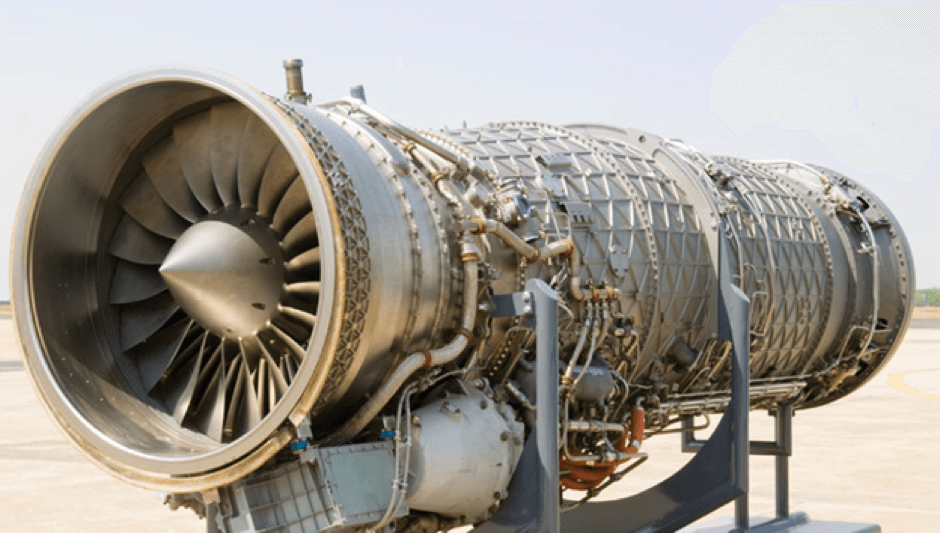
Aircraft engineers and manufacturers use air compressors in aircraft engines as the dominant components in the engine’s core systems.
The compressors have an air shaft where air enters the aircraft and flows through fans.
The compressor fans raise air pressure, raise the air’s energy potential, and flows the now-compressed air through to the combustion chamber.
Air compression is a crucial part of safety tests in airplane building since aircraft engines must have an optimal performance during a flight.
During the manufacturing process, air compression is a simulation tool to test engine performance and durability.
Ground Support Equipment
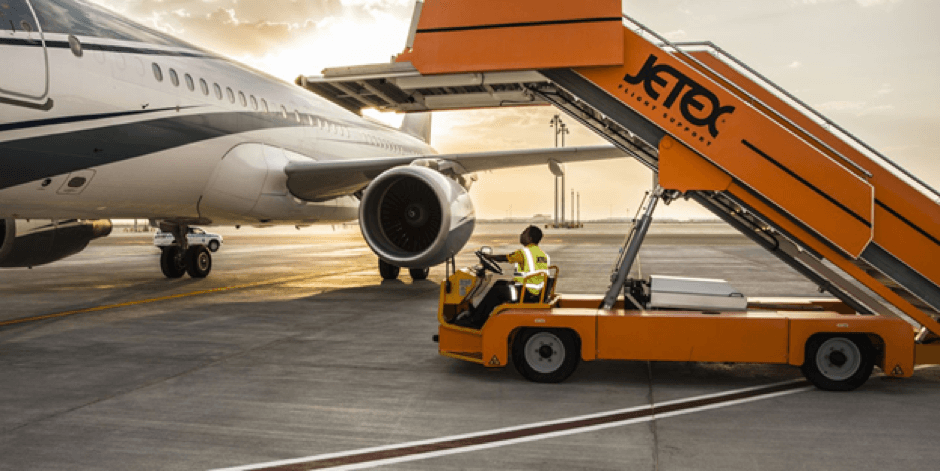
The ground support equipment is a set of support equipment used to maintain and facilitate aircraft operations in between flights.
A ground support team will typically use hammers, grinders, and welding equipment to maintain operability.
Teams use air compressors to repair aircraft functions and parts and to create cabin pressure.
An Air Start Unit device produces high volume and low-pressure air to start the engine for the next flight.
The Air Start Unit is fitted with gas turbine units, stored air carts, and screw compressor units to create optimal air pressure for engine function.
Fuel Injection Systems
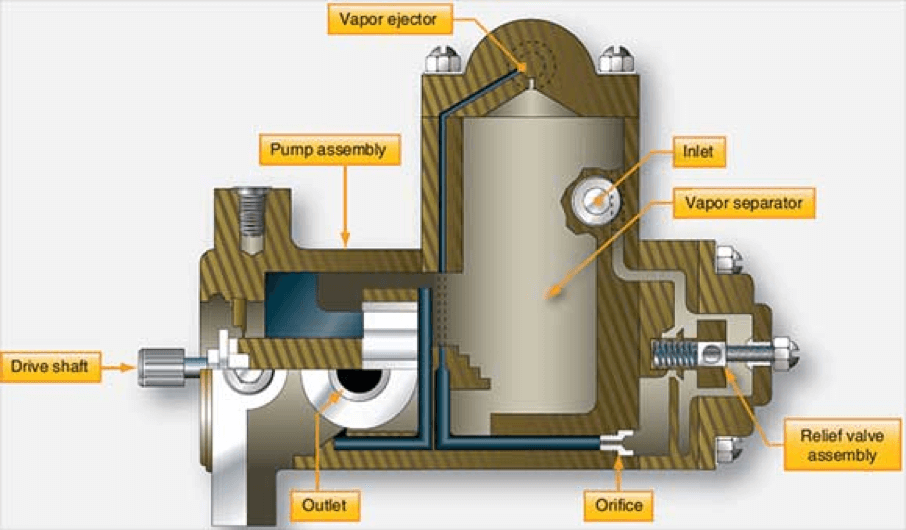
A fuel injection system runs the aircraft and uses fuel pumps to flow engine fuel through metering systems, injector lines, and individual cylinders.
Fuel-injected systems do not have air combined with the engine fuel in the metering system; however, air compression plays a key role in the functioning of the system.
Aircraft engineers use air compressors to input fuel into the engine cylinders to ensure the aircraft engine runs on a stable supply of fuel needed during long flights.
Wing Structural Testing

Aircraft wing structures are tested through simulations and air compression tests.
Engineers use air compressors to test the different components of the wings to assess their sturdiness, endurance, and functionality.
An aircraft engineer especially needs to test the endurance of the wings’ slats for catapult takeoffs and arrested landings.
Slats are movable control surfaces that face high-energy air or boundary layer control air at high airspeeds.
As the slat extends forward, slots between the wing’s slat and leading-edge cause high-energy air to enter the boundary layer of the top wing.
Engineers construct wings to produce boundary control air through the high-pressure engine bleed air onto the slat surface.
Cabin Air Pressurization
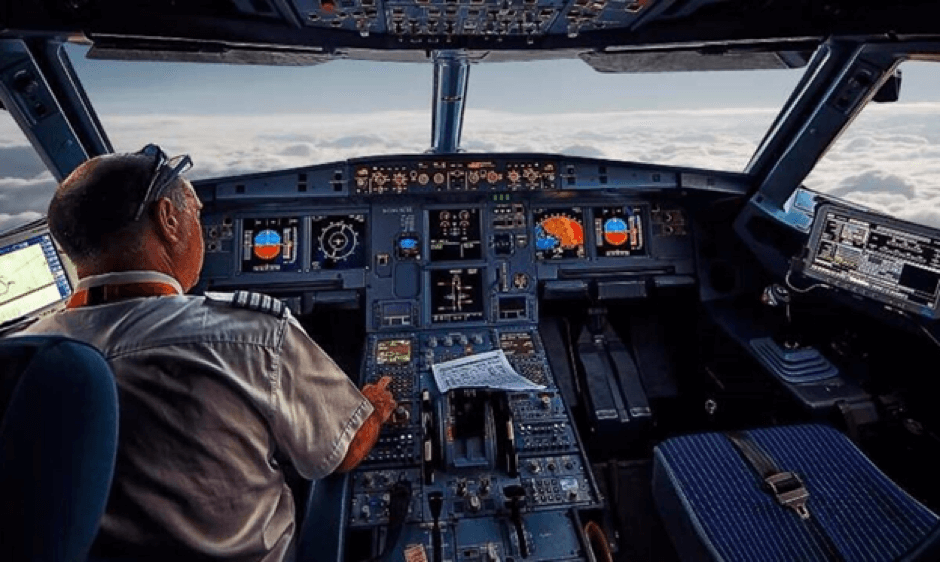
Cabin pressurization systems were invented to make sure cabin crew and passengers can breathe easily at high altitudes.
Previously, piston-powered aircrafts pumped external air into cabins with electric air compressors to create cabin pressurization.
Today, aircraft bleed air from engines and turbo compressors and divert the air into the cabin areas to create air pressure.
Hot-bled air from the engine compressors and combustion chambers flows through the intercooler and turns into ambient air, further cooled by air packs and air cycle machines.
Air compression is used to process the air and disperse the heat outside before the air is expanded in an expansion turbine and cooled down.
Cooled air is combined with circulating air in the cabin with fans and the influx of air in the aircraft is regulated with an automatic outflow valve to maintain cabin pressure.
Why Should We Choose Screw Type Compressor
|
30~40bar
Air Compressor:
Screw VS Piston
|
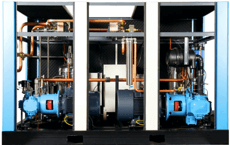 |
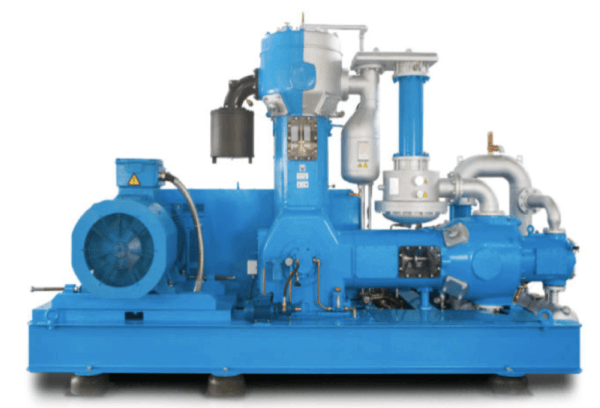 |
| Comparison |
Oil free Screw Air Compressor |
Oil free Piston Air Compressor |
| Air quality |
100% Oil-free |
Air cylinder Oil-free, Crankcase has oil |
| Compression Method |
2 Stage Screw |
3 Stage Piston |
| Lubricating Medium |
Pure Water |
None |
| Temperature |
Low: < 55℃, No need for cooling |
High: 125~200℃, After cooling about 60℃ |
| Cooling Method |
Air Cooled or Water Cooled (Only one cooler for lubricating water) |
Water Cooled (Two interstage cooler and one aftercooler for compressed air) |
| Rotate Speed |
3000 r/min Ideal Speed |
600~900 r/min Low Speed |
| Vibration and Noise |
Balance and Simple structure, low vibration, and less noise |
The pistons rise and fall or move back and forth causing too much vibration and Noise |
| |
|
|
| Costs – Purchasing |
More |
Less |
| Costs – Foundation |
No costs |
Require foundation and grouting due to high unbalanced forces & high vibration. |
| Costs – Maintenance |
Only Air filter elements and Water filter elements |
High wear & tear of moving parts like piston rings, valves, etc. |
| Costs – Energy (e.g. 40bar 10m3/min) |
Motor Power: 112kW (1st stage 75kW+2nd stage 37kW) |
Motor Power: 132kW |
| Capacity Loss |
There is no loss / very minor loss in Capacity over a period. |
There is De-ration in Capacity due to wear and tear in cylinder crank case, piston rings, pistons and valves. |
Quality Requirements for Aerospace Air Compressor
Generally, the compressed air should be purified of contaminants before use. General contaminants are solid particulates, water vapor, and moisture, oil vapors. Which are in the atmospheric air, the lubricating oil for oil-injected type air compressors, the pipes, storage air tank, and distribution.
When the compressed air will be applied to aerospace industry, we must ensure purity and cleanliness to prevent contamination. For the details what we should do are as follows:
Remove the moisture
As we know, moisture is good for microorganisms and fungus growth. If there is moisture inside the pipes of the compressed air, it is easy to be blown to the products or the packaging or containers. So we need to use dryers to ensure the required dew point. Generally, for the direct contact compressed air, the dew point should be -40℃ and use a desiccant air dryer, and for low-risk non-contact compressed air, the dew point can be 3℃ and use a refrigeration air dryer.
Remove the oil
The oil exists in the atmospheric air, so even you choose a 100% oil-free type air compressor, there is still oil vapor in the compressed air, so the filters should be used.
Generally, for direct contact compressed air, use an oil-free type air compressor is a must. Ensures Class 0 100% oil-free compressed air with high purity, eliminates the health risk of rejection risk associated with oil contamination. For low-risk non-contact compressed air, we can use an oil-lubricated type air compressor which is more economical, but it’s better to use filters to ensure the oil content 0.003ppm.
Remove the particles
The atmospheric air includes solid particulates or dust that may cause contamination if contact with the products. Other contaminants may come from internal mechanisms of the air compressor system. We also need to use filters to ensure the particle content is no more than 0.01μm.
Common Equipment for the Aerospace Applications
- For the direct contact compressed air for production line, we suggest using 100% Oil-free type air compressor with the desiccant air dryer and filters, the materials should be used is food-grade stainless steel.
- For the non-contact low-risk compressed air for production line, if with a limited budget, the oil-lubricated type air compressor with refrigeration air dryer and filters can be chosen, but for long term consideration, an oil-free type air compressor can not only produce high-quality oil-free and clean air but also costs lower for maintenance and energy.
